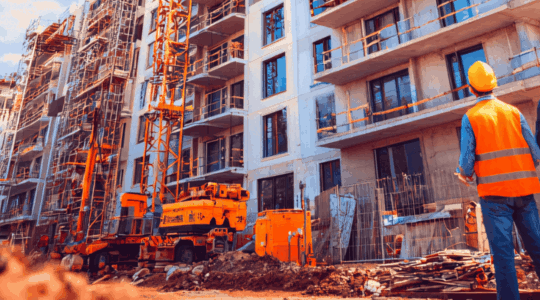Environmental
Contaminated Real Estate: Building the Right Team for Transaction Success
Learn how environmental, legal, financial, and other experts collaborate to turn risky properties into redevelopment opportunities.
October 30, 2025
Buying or selling contaminated property is not your typical real estate transaction. It’s a high-stakes process that requires specialized knowledge blending environmental science, legal strategy, and financial risk management.
Done right, these deals can unlock valuable redevelopment opportunities, but they require the right team of professionals to navigate the complexity. Here’s a breakdown of the critical roles and how each industry expert helps protect your interests.
Real Estate Agent
Even in specialized transactions, a real estate agent is vital in connecting buyers and sellers. The agent has two primary responsibilities:
- Facilitating the transaction from listing to closing
- Disclosing any known contamination risks to all parties
A savvy real estate agent helps position the property’s potential post-cleanup to attract the right buyers.
Environmental Attorney
An environmental attorney is the legal backbone of your transaction. The attorney’s primary responsibilities include the following:
- Advising on environmental laws and regulatory requirements
- Negotiating contract language on indemnity, cleanup responsibility, price adjustments, and post-cleanup land use
- Coordinating with government agencies for liability protections for the buyer under the federal Comprehensive Environmental Response, Compensation, and Liability Act (CERCLA) for bona fide prospective purchasers, innocent landowners, and contiguous property owners
An experienced environmental attorney ensures that the buyer and seller are responsible only for the contamination they caused and that the buyer's liability protections are secured.
Environmental Consultant
An environmental consultant is the first line of defense in understanding the property’s condition. These are the consultant’s primary responsibilities:
- Phase I Environmental Site Assessment (ESA): The industry-standard starting point. This assessment reviews site history, public records, interviews, and a visual inspection to identify any recognized environmental conditions (RECs).
- Phase II ESA (if needed): If RECs are found, the consultant will sample soil, groundwater, or building materials to confirm contamination and define its extent.
- Remediation Oversight: If contamination exists, the consultant develops and executes a cleanup plan that complies with environmental laws and regulations.
Without a qualified environmental consultant, buyers risk underestimating cleanup costs or missing contamination entirely.
Lender
Financing can be one of the biggest hurdles in contaminated property transactions. When it comes to contaminated property, the lender’s primary duties include the following:
- Reviewing environmental documentation and risk management measures
- Refusing financing if environmental issues aren’t resolved or aren’t insured
Sometimes, a lender may require a lender liability insurance policy to protect its interest in case the buyer defaults on the loan.
Environmental Insurance Broker
Contaminated property transactions often hinge on securing the right environmental insurance coverage. These are the broker’s primary responsibilities:
- Coordinating with carriers to secure pollution legal liability policies
- Tailoring insurance solutions to cover both known and unknown pollution risks
- Helping structure deals so risk transfer is clear and enforceable
Your broker ensures you get the best coverage, terms, and pricing for your needs.
Environmental Insurance Underwriter
The underwriter works with the broker to place the most beneficial coverage for the site. The broker’s key responsibilities include the following:
- Evaluating the property for pollution liability coverage, such as pollution legal liability insurance, based on environmental site assessments
- Structuring coverage terms that protect against cleanup cost overruns and third-party claims
Your underwriter’s understanding of the site’s future use is critical to securing the right coverage.
Local, State, and Federal Government
Regulators aren’t just enforcers. They can also be partners in redevelopment. The regulator’s primary responsibilities include the following:
- Overseeing and approving the remediation to ensure compliance with environmental laws and regulations
- Providing grants, low-interest loans, or tax credits as applicable for brownfield redevelopment projects
Local, state, and federal regulators can facilitate obtaining “no further action” letters, allowing the safe and financially beneficial reuse of contaminated land.
The Bottom Line
Buying or selling contaminated real estate isn’t just a property deal. It’s a coordinated effort between environmental experts, legal advisors, insurers, and regulators. The right team protects you from liability and can turn a challenging property into a valuable opportunity.
Assemble your team early if you’re considering a transaction involving a contaminated site. Their expertise will be your best safeguard against surprises and your best chance at a successful deal. Remember that Hylant’s environmental insurance advisors can help you navigate risks and secure the right coverage to protect your investment.
Related Reading: Using Site Pollution Liability Insurance to Close Real Estate Deals
The above information does not constitute advice. Always contact your insurance broker or trusted advisor for insurance-related questions.
Authored by
Suzi is a licensed attorney and a property and casualty broker with experience in the legal, environmental and insurance sectors. She assists clients with the development of exposure-specific pollution insurance programs and specializes in complex pollution placements.



